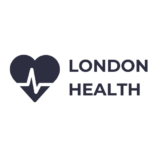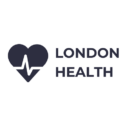Massage is a very popular and versatile treatment that can produce a wealth of mental and physical health benefits.
Physical benefits:
- Increased circulation: this enables blood to flow to the muscles quicker, which is instrumental for recovery after sport and preparation before sport. Massage also improves the circulation system, which has long-term positive effects for the health of the vital organs.
- Reduced inflammation: increased circulation helps to remove waste products and replace nutrients in the affected area of the body, which reduces swelling and eases pain.
- Improved drainage: encouraging blood flow and increasing body temperature encourage more efficient drainage of toxins and waste products from the muscles and lymphatic system; this helps to prevent the onset of delayed muscle soreness.
- Reduced muscle tension: massage allows the muscles to relax, which reduces tension and stiffness and eases pain.
- Injury prevention: massage helps the muscles to relax after exercise and warm-up before exercise; both result in a reduced possibility of injury. Massage can also alleviate recurrent or overuse injuries by helping to ease the strain placed on certain muscle groups.
- Improved posture: massage helps to restore the body�s natural posture as it reduces the tension in the muscles and surrounding connective tissue; this is particularly important for preventing neck and back pain.
Psychological benefits:
- Relaxation: massage helps to relax the muscles, release tension and divert people�s attention from their busy and stressful lives.
- Mental well-being: massage helps to alleviate stress and reduce anxiety; this can lead to a more positive outlook on life.
- Increased energy: massage helps to raise body temperature and increase circulation which makes people feel invigorated and energised.
Is massage painful?
In most cases, massage is not painful; however, more forceful massages which are designed to reduce stiffness, ease knots in the muscles and stimulate blood flow may feel slightly uncomfortable if you�re not used to stronger massage techniques.
Types of massage
There are many different types of massage; the most popular techniques are outlined below:
- Effleurage: this is a very gentle massage technique, which involves a repeated stroking movement on the skin.
- Petrissage: this is a firmer action, which is also commonly known as kneading.
- Frottage: this is a firmer action, which is often used to release tension in the muscles. It involves applying direct pressure to the tissue.
- Tapotement: this involves repeated tapping and clapping actions across the surface of the skin.

